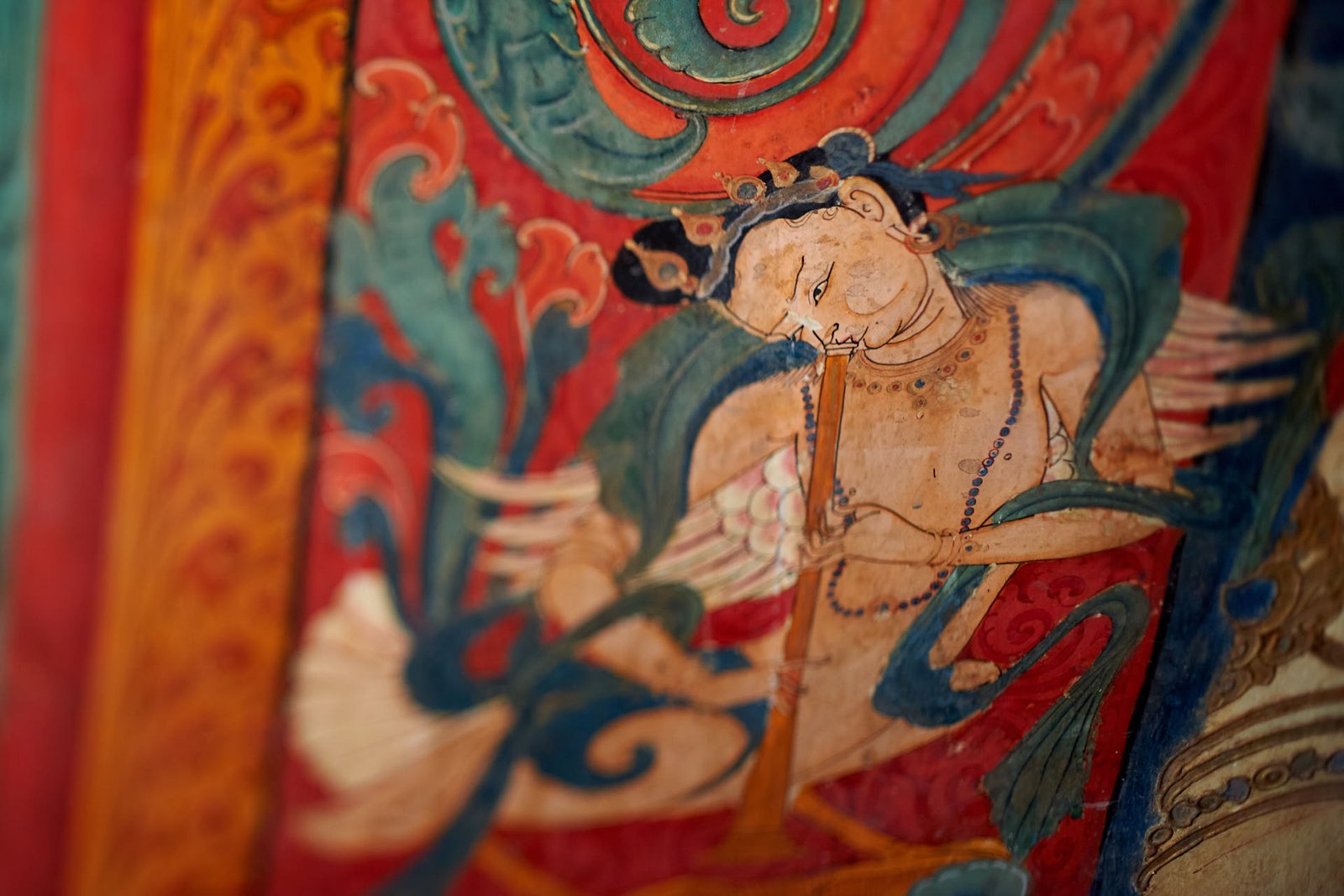the challenge
The project of painting anew all the missing parts was developed after a thorough study of the original wall paintings still existing in the monastery. Before any reconstruction took place it was crucial to understand how the pictorial cycle was conceived and organised by the XV century masters.
Understanding the whole iconography as much as possible and how the wall paintings space was logically planned would have helped to carry out the reconstructions of the missing parts of the pictorial cycle at their best.
More than half of the wall paintings are lost and there is no record of what there was and how it was painted, which made the reconstruction a real challenge. All the reconstructions had to be based on what was left and from the few articles written from Tibetologists and Art Historians.


